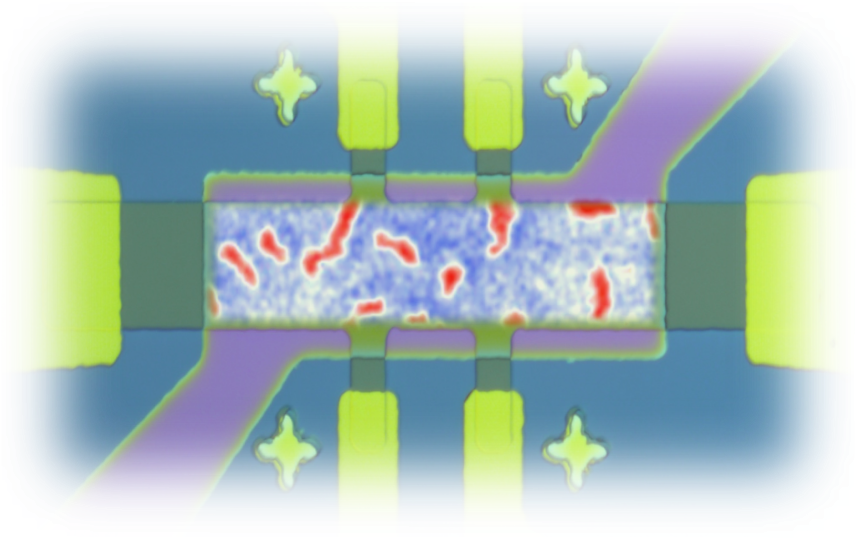RICHMOND, Va. (June 30, 2020) — Researchers at Virginia Commonwealth University (VCU) and the University of California, Los Angeles (UCLA) have made an important advance that can lead to more energy-efficient magnetic memory storage components for computers and other devices, according to findings reported in the June 29 issue of the journal Nature Electronics.
Magnets are widely used for computer memory because their “up” or “down” polarity — the magnetic state — can be “flipped” to write or encode data and store information. Magnetic memory offers a key advantage: it is non-volatile, so information can be stored on devices without refreshing. However, magnetic memory also requires a lot of energy.
A recently discovered magnetic state called the skyrmion, which is neither “up” nor “down” but flower-shaped, offers a solution. Manipulating the skyrmion state allows much more efficient, robust data storage for conventional computers and wireless “smart” devices.
In the Nature Electronics study, the researchers created and deleted skyrmion states that are fixed in space, an alternative to existing methods, which use current to control the motion of skyrmions. The researchers demonstrated that fixed skyrmions can be created using voltage pulses and stabilized without any external magnetic fields on specially prepared films.

“Our finding demonstrates the possibility of controlling skyrmion states using electric fields, which could ultimately lead to more compact, energy-efficient nanomagnetic devices,” said Dhritiman Bhattacharya, a doctoral candidate at the VCU College of Engineering and the publication’s lead author.
Jayasimha Atulasimha, Ph.D., VCU's Qimonda Professor in the Department of Mechanical and Nuclear Engineering, is Bhattachayra’s dissertation adviser and corresponding author of the paper. He added that this is “a stepping stone toward ultimately developing commercially viable magnetic memory based on this paradigm.”
The VCU researchers used magnetic force microscopy to image the creation and annihilation of skyrmions in films grown at UCLA. They further analyzed and explained their experimental findings using micromagnetic simulations.
The UCLA team developed the material system and characterized it using electrical and optical measurements. They also fabricated the devices and prepared them for magnetic force microscopy imaging at VCU.
“Voltage-control of magnetism and topology are two important concepts for the future of nanomagnetic devices, and we are utilizing both of them in an energy-efficient device,” said Armin Razavi, a doctoral candidate at UCLA and a co-author of the publication.
Kang L. Wang, Ph.D., distinguished professor and Raytheon chair in electrical engineering at UCLA, is Razavi’s dissertation adviser and a corresponding author of the paper.
In 2016 and 2018, the VCU researchers showed that using an intermediate skyrmion state to force very precise magnetic transitions between the “up” and “down” state could reduce errors in writing information to memory, making devices more robust to material defects and thermal noise. They hold a patent (U.S. patent 10,593,389) on this idea.
The new proof-of-concept experiment presented in Nature Electronics is the first step towards making such a device. The researchers will further develop this process by fabricating magnetic nanodots to control individual skyrmions. This will move their method closer to use in commercial magnetic memory devices.
Their research is funded by the National Science Foundation, the U.S. Department of Defense, the U.S. Department of Energy, VCU, UCLA and the C. Kenneth and Dianne Harris Wright Virginia Microelectronics Center.
The full text of the article “Creation and annihilation of non-volatile fixed magnetic skyrmions using voltage control of magnetic anisotropy” is available online. Its authors are Dhritiman Bhattacharya (Virginia Commonwealth University), Seyed Armin Razavi (University of California), Hao Wu (University of California), Bingqian Dai (University of California)
Kang L. Wang, Ph.D. (University of California) and Jayasimha Atulasimha, Ph.D. (Virginia Commonwealth University). Nature Electronics is a publication of the journal Nature, one of the world’s most-cited academic journals.
